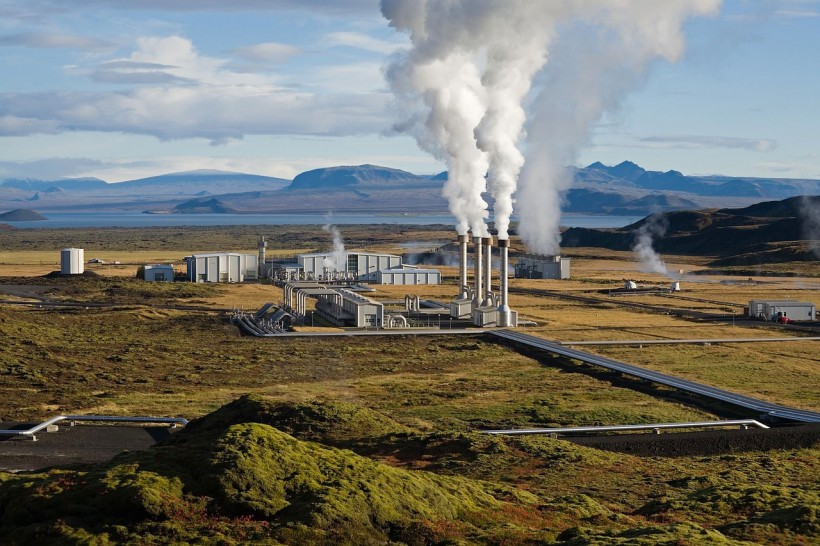
Geothermal energy is a key technology for reducing carbon dioxide emissions from buildings, which account for about 25% of global CO2 emissions. Works in this field directly support efforts to decarbonize residential, commercial, and industrial buildings using advanced geothermal systems. These systems have the potential to reduce building emissions by up to 90%, making them a critical component of the U.S.'s carbon reduction strategy. The Inflation Reduction Act (IRA) of 2022 has bolstered the geothermal sector by providing a 30% Investment Tax Credit (ITC) for residential and commercial geothermal projects. This financial incentive has made geothermal systems more accessible by reducing upfront costs and accelerating the adoption of clean energy solutions.
Dmitry Kuravskiy, the Drilling Operations Lead at Celsius Energy, is at the forefront of advancing geothermal drilling techniques in the United States and globally. With over a decade of drilling engineering experience in the oil and gas sector, Kuravskiy has brought his expertise in designing and drilling complex bores ranging from 10,000 to 45,000 feet deep to the geothermal industry. His leadership has been instrumental in the development and implementation of deviated and angled drilling for shallow geothermal projects, significantly improving the efficiency and scalability of these systems.
Kuravskiy and his team at Celsius Energy are leveraging these incentives to further the growth of geothermal installations across the U.S.—deviated well drilling and the collocated drilling approach developed by Celsius Energy, combined with automation and digital instrumentation, are helping make geothermal energy more efficient and cost-effective. Kuravskiy and his team also lead public education initiatives, which aim to raise awareness about geothermal energy as a viable solution in the fight against climate change. Let's explore these innovations.
Deviated Well Drilling and the Collocated Approach
Dmitry Kuravskiy has been in charge of developing and applying deviated well drilling techniques for geothermal projects, bringing advanced drilling practices from the oil and gas sector into geothermal energy. These techniques allow for the drilling of wells at angles between 10 and 25 degrees, significantly reducing the surface footprint of geothermal installations—by up to 95%. This is particularly important for urban and space-constrained environments, where traditional geothermal systems require extensive surface areas for drilling.
Simultaneously, Celsius Energy's team has developed the collocated drilling approach. This method groups boreholes in a concentrated area, minimizing the need for expansive civil works and reducing associated costs by up to 90%. The collocated approach also dramatically reduces piping costs by up to 90% since boreholes are connected at a single point. These innovations make geothermal installations faster, less disruptive, and more cost-effective. The wider spacing between boreholes in the collocated approach—up to 100 feet at total depth—enhances system efficiency by allowing the geothermal system to tap into a larger thermal mass. This increases overall efficiency during peak heating and cooling periods and reduces the number of boreholes needed for the same energy output, further driving down costs and project timelines.
Leveraging Oil and Gas Experience in Geothermal Drilling
Dmitry Kuravskiy's extensive background in oil and gas drilling has been pivotal in shaping the innovative drilling techniques now used in geothermal projects. He has successfully applied the complex design and drilling strategies used for oil and gas wells—ranging from 10,000 to 45,000 feet deep—to the relatively shallow geothermal sector. This transfer of knowledge has allowed for the efficient execution of geothermal projects, reducing risks and optimizing resources.
Automation and Instrumentation in Geothermal Drilling
Beyond the drilling techniques, it is necessary to note efforts to modernize geothermal drilling by incorporating automation and digital instrumentation. Traditionally, shallow geothermal drilling has relied on outdated technology, which limited scalability and drove up costs. Kuravskiy's push for automation in tasks such as pipe handling, wellbore monitoring, and real-time data collection has reduced operational costs by up to 60%.
Automation also helps address labor shortages, which have been a major challenge in expanding geothermal installations. By reducing the required on-site workforce from 4–6 people to just 1–3, the team has streamlined operations, reduced human error, and accelerated project timelines. This innovation allows geothermal projects to be completed more quickly and at lower costs, further advancing the adoption of clean energy.
The use of digital instrumentation also facilitates continuous improvement in drilling techniques. Data collected in real time enables Celsius Energy's professionals to refine their approaches, optimizing performance and further reducing costs for future geothermal projects.
Public Education and Awareness
While technological innovation is critical, we understand the importance of public education and outreach in promoting geothermal energy as a viable clean energy solution. Geothermal technology is often underrepresented in discussions about renewable energy despite its significant potential for reducing emissions and lowering energy costs. To bridge this gap, Dmitry Kuravskiy leads educational initiatives through conferences, forums, and industry discussions, making the case for geothermal energy in clear, accessible terms.
By increasing public awareness of the environmental and financial benefits of geothermal systems, engineers are helping to build confidence in this technology, which is essential for expanding its market adoption. Their outreach efforts play a vital role in helping the U.S. meet its renewable energy goals and accelerate the transition to a cleaner, more sustainable future.
***
Implementation of geothermal drilling techniques—particularly in the areas of deviated and angled drilling—has made a significant impact on the scalability and efficiency of geothermal energy systems in the U.S. and globally. The ability to leverage drilling experience from the oil and gas industry has helped bring innovative solutions to the geothermal sector, reducing costs and increasing project efficiency. The combined efforts of Kuravskiy and the team at Celsius Energy are transforming the geothermal industry, making it a key contributor to the U.S.'s green energy transition. As geothermal energy continues to grow, these innovations will play a crucial role in helping the U.S. achieve carbon neutrality, reduce dependence on fossil fuels, and foster a sustainable energy landscape.
* This is a contributed article and this content does not necessarily represent the views of sciencetimes.com














